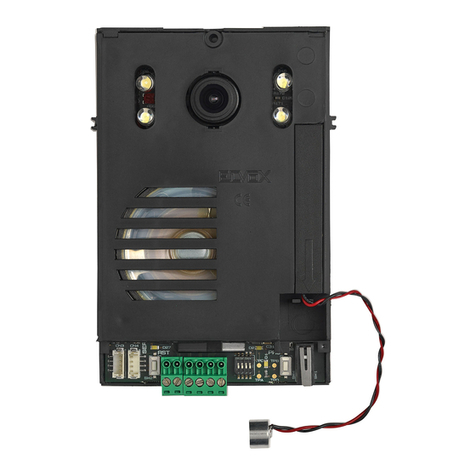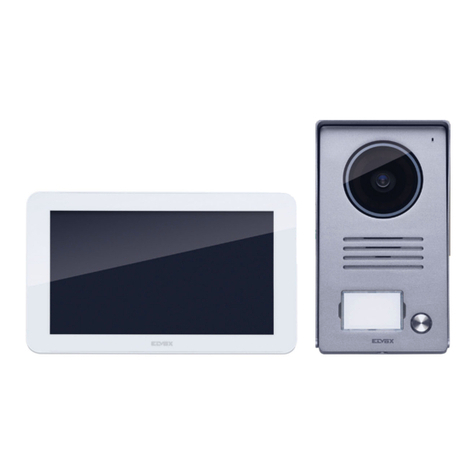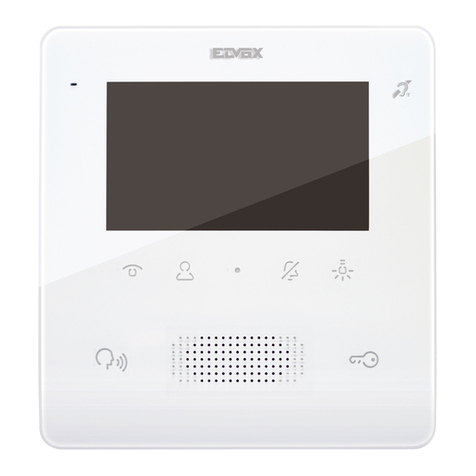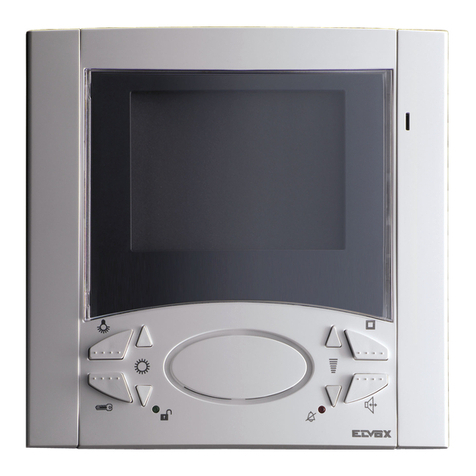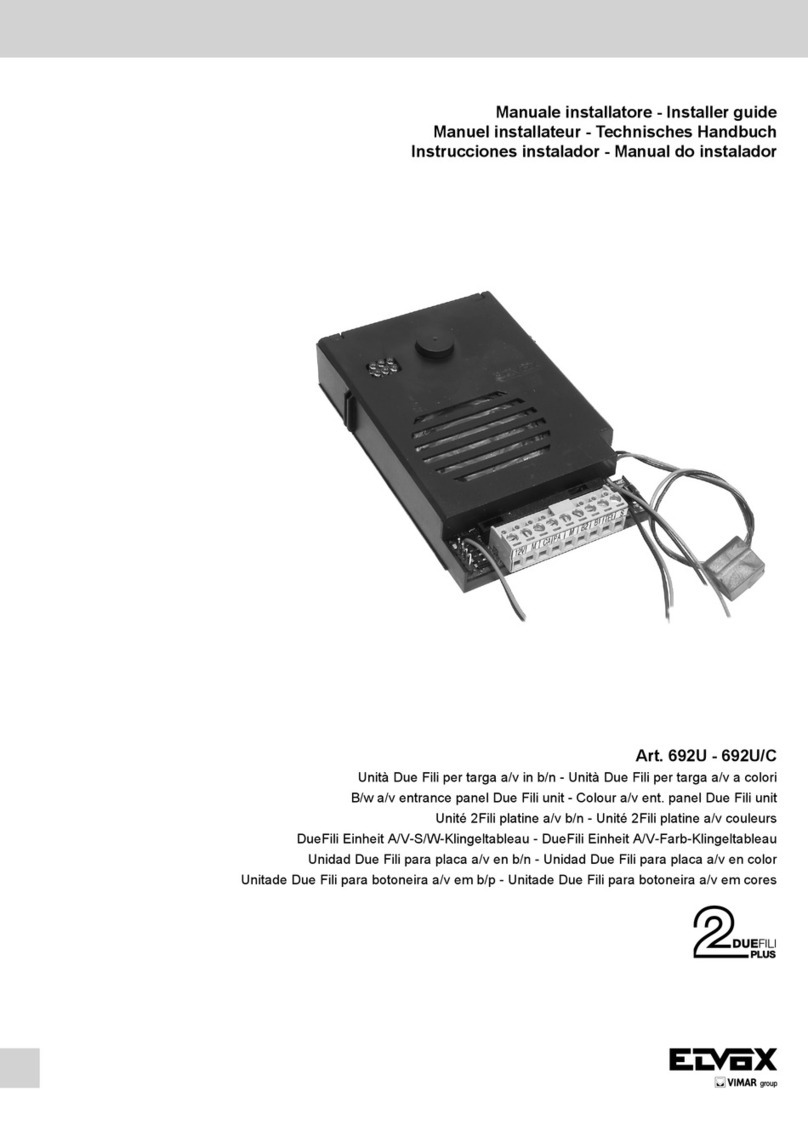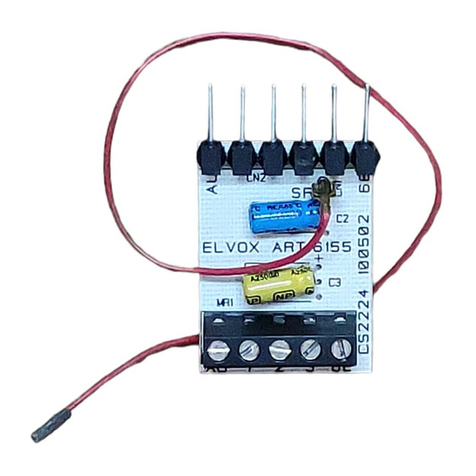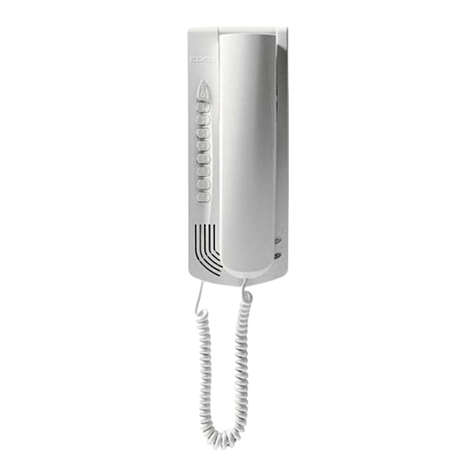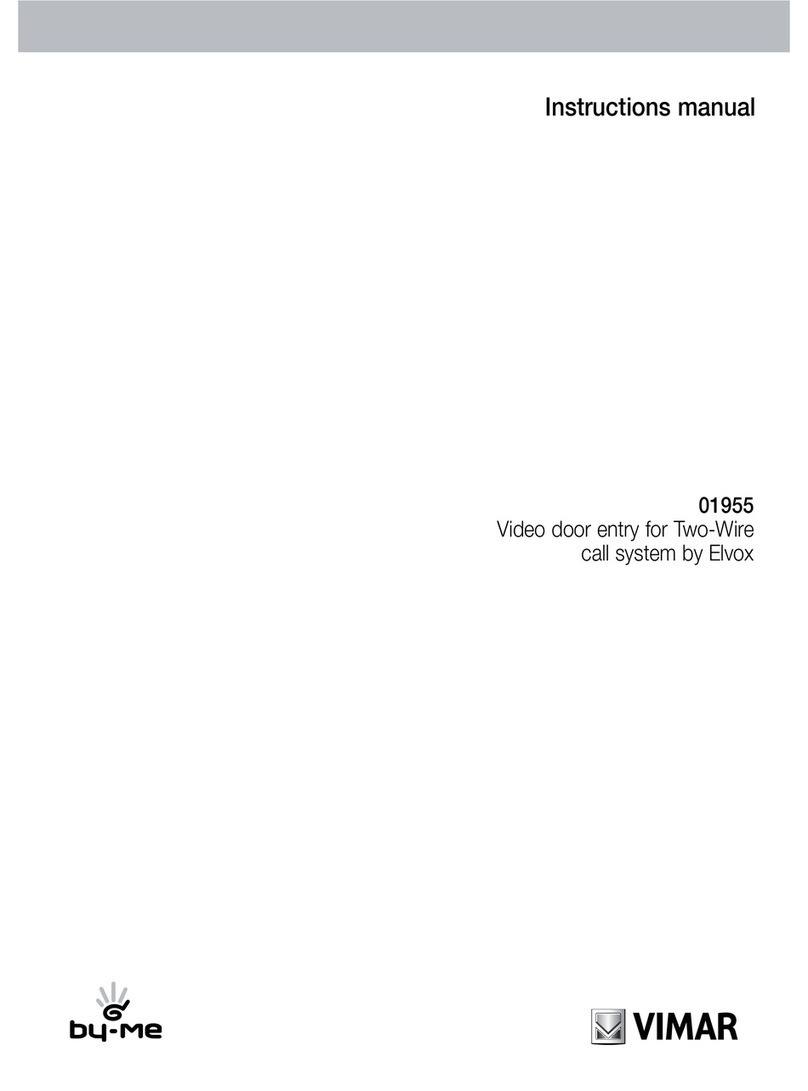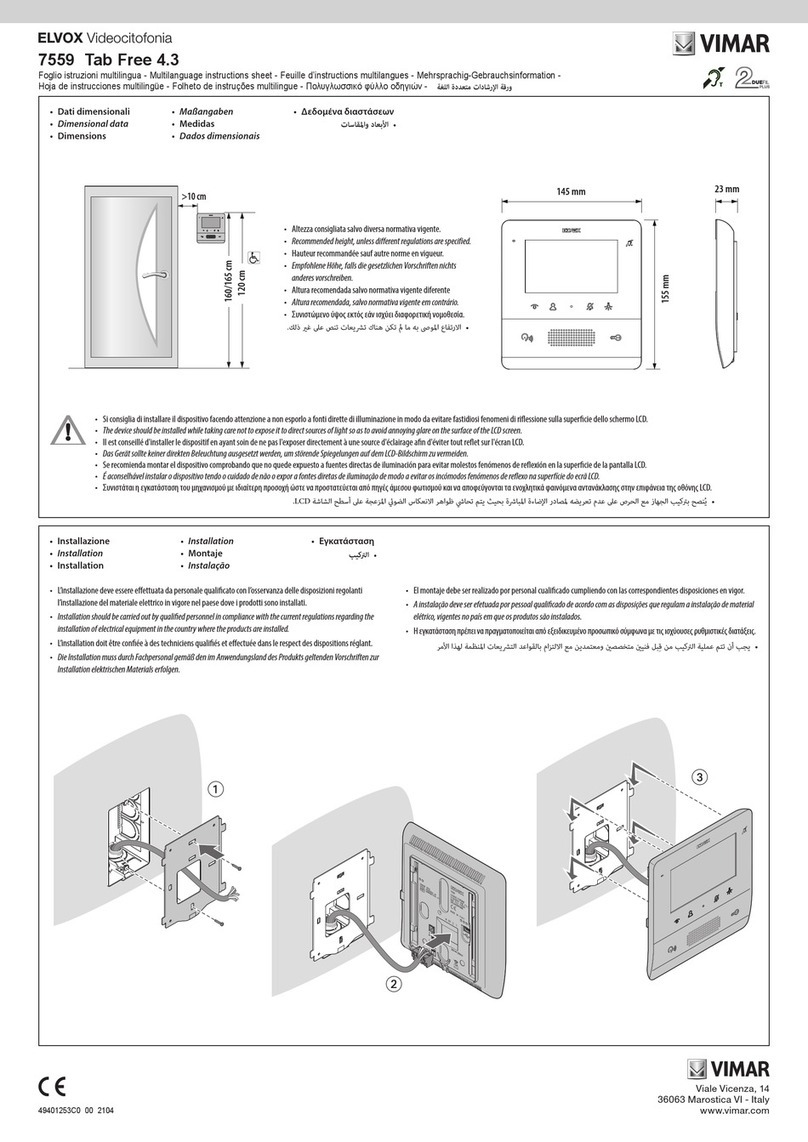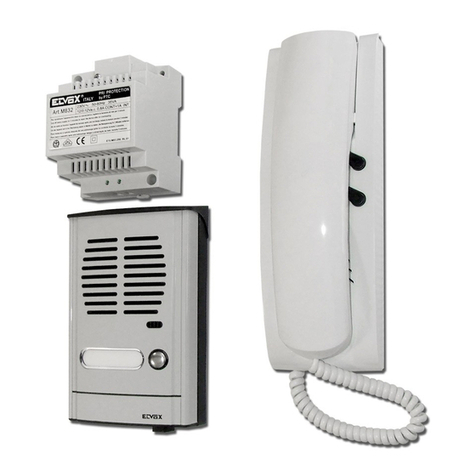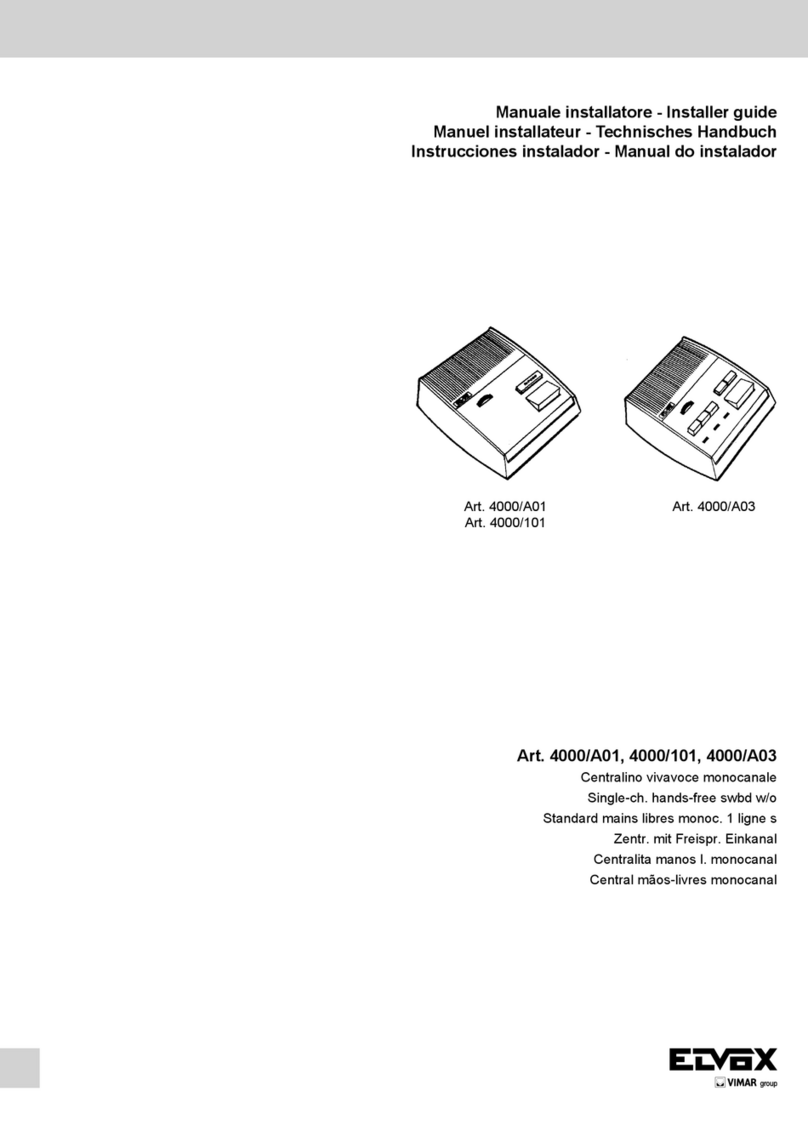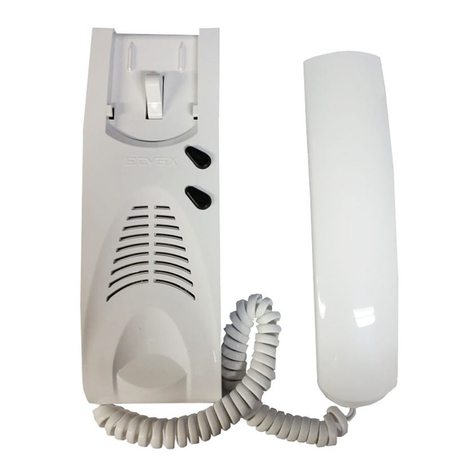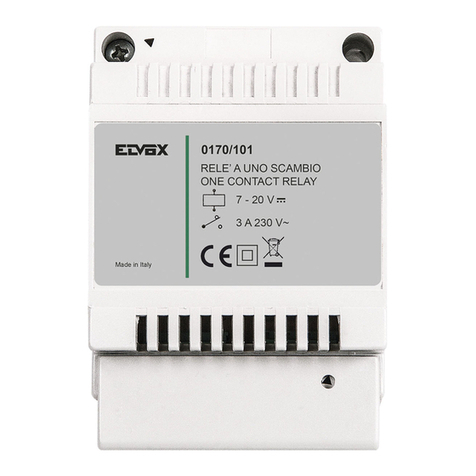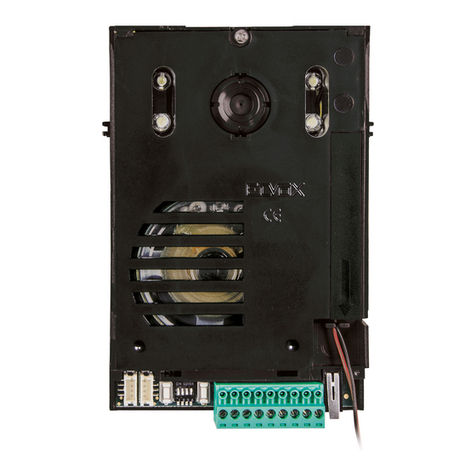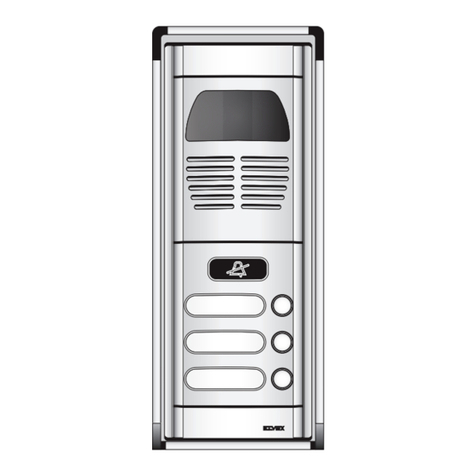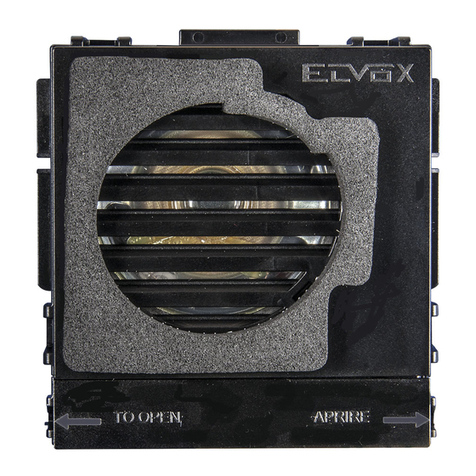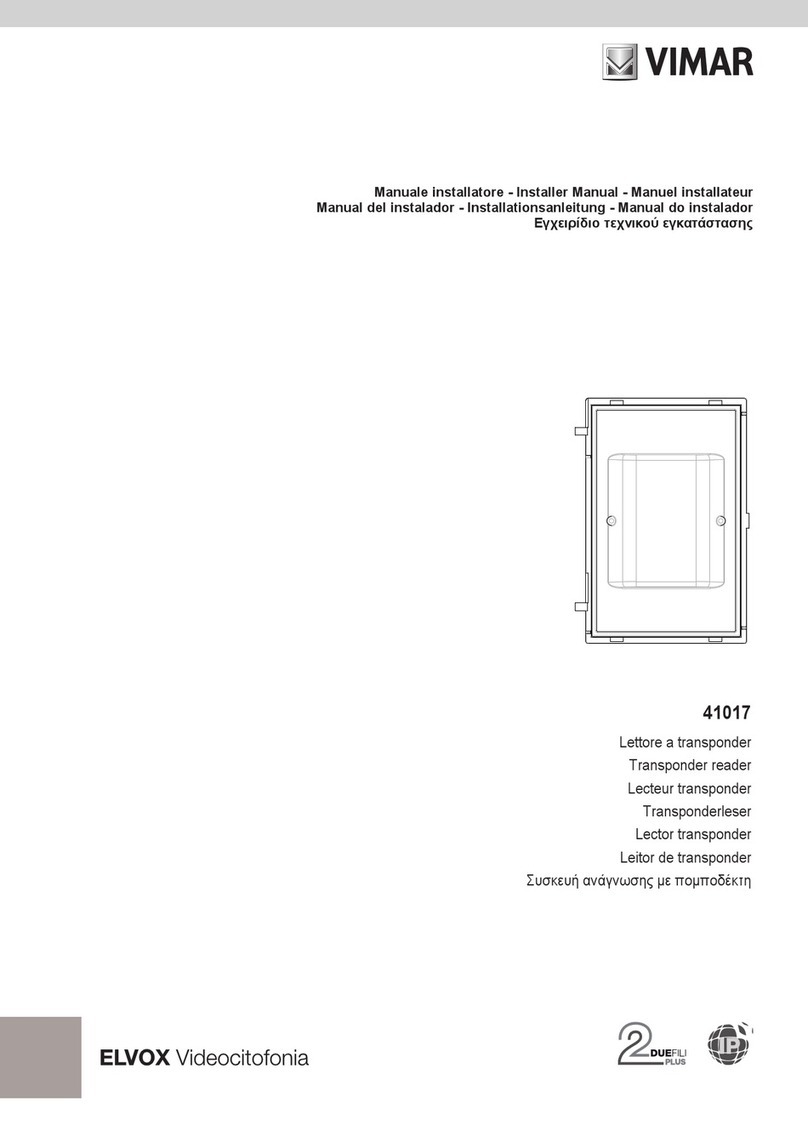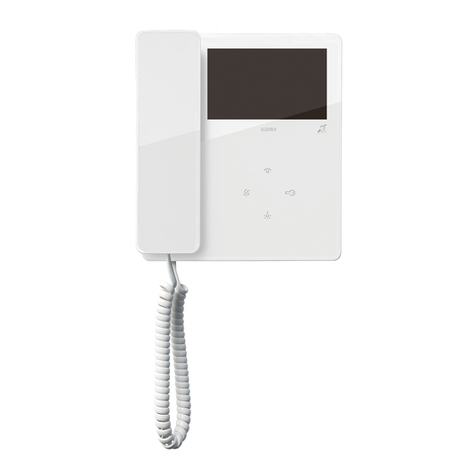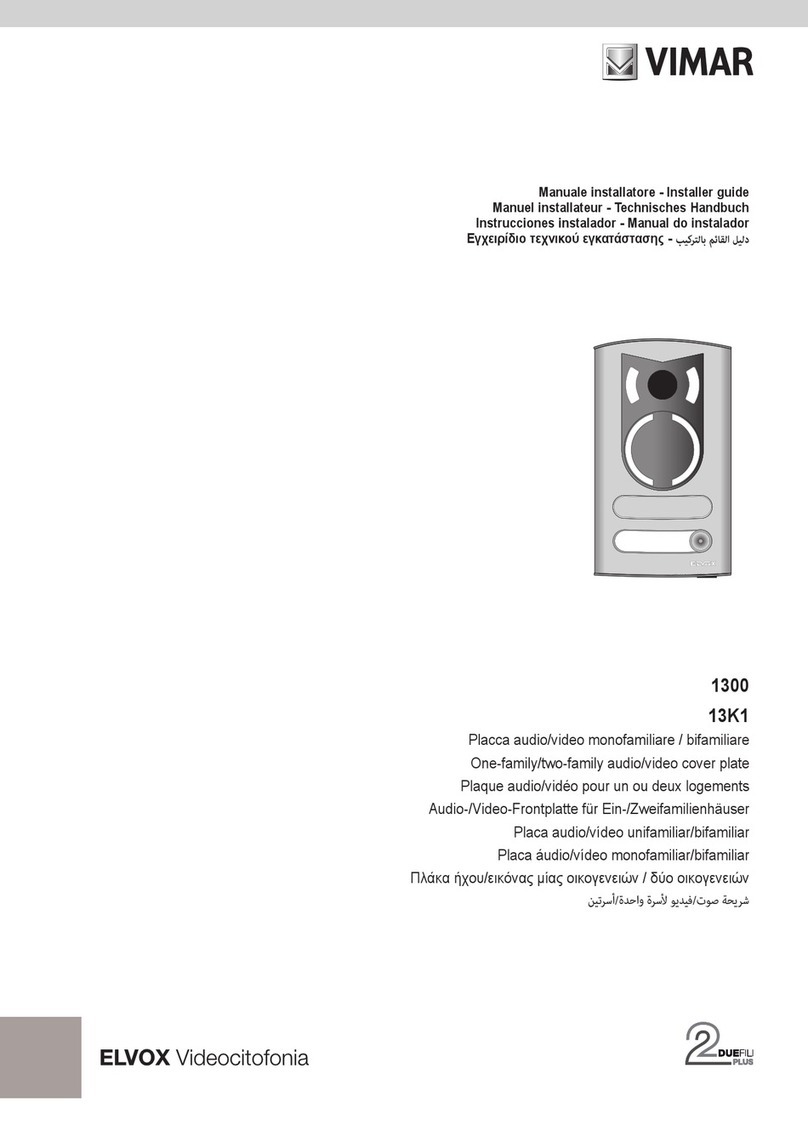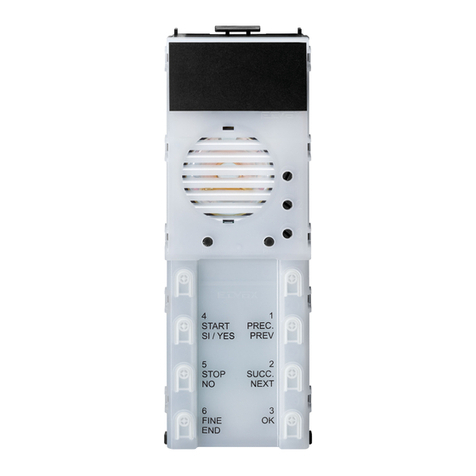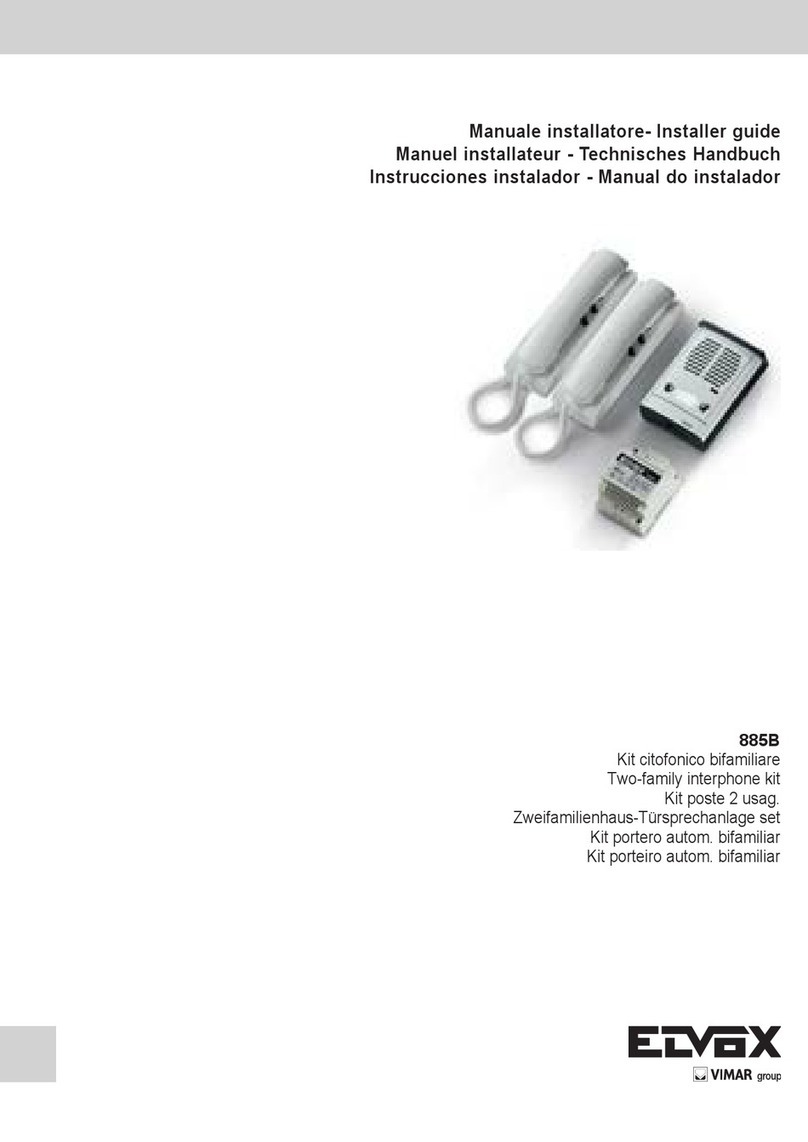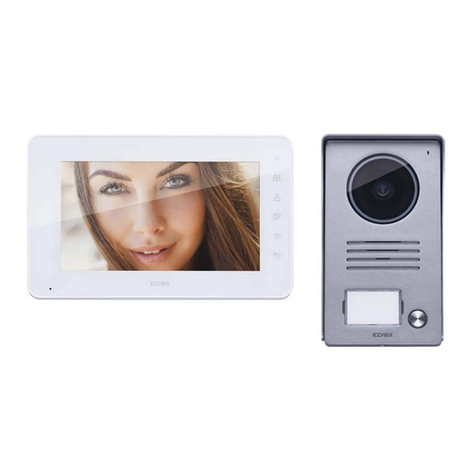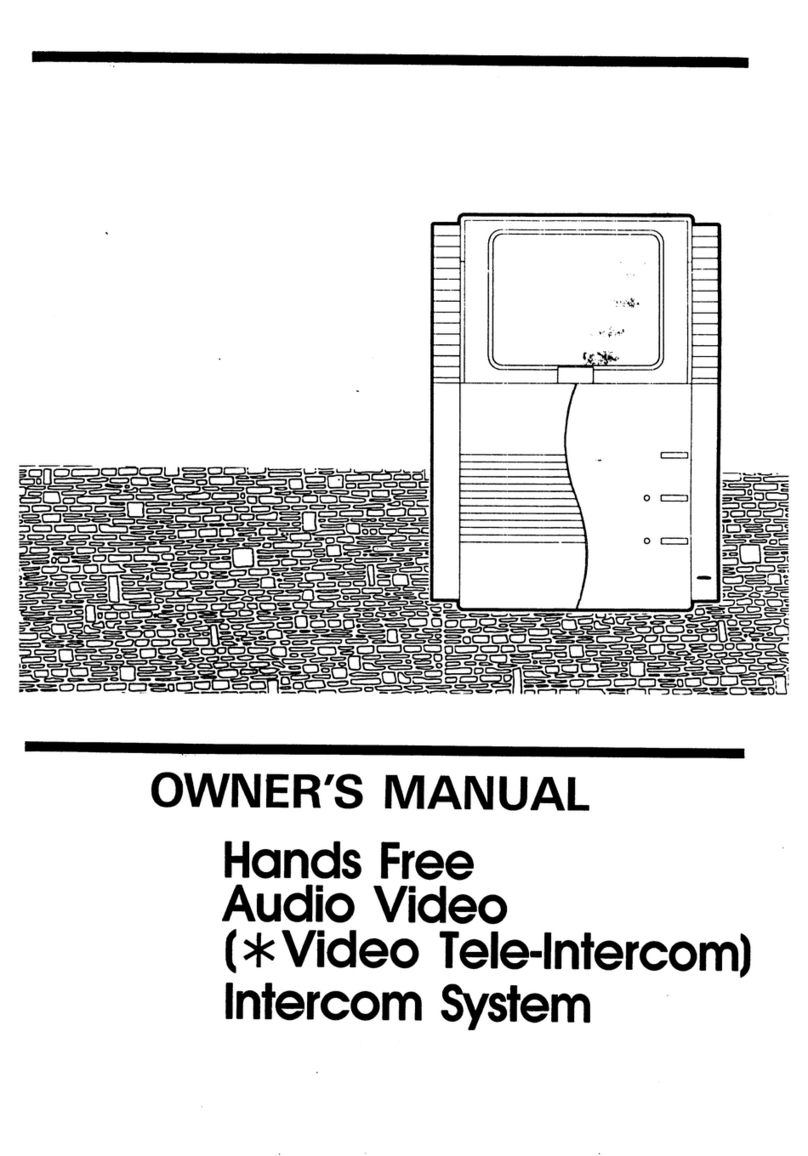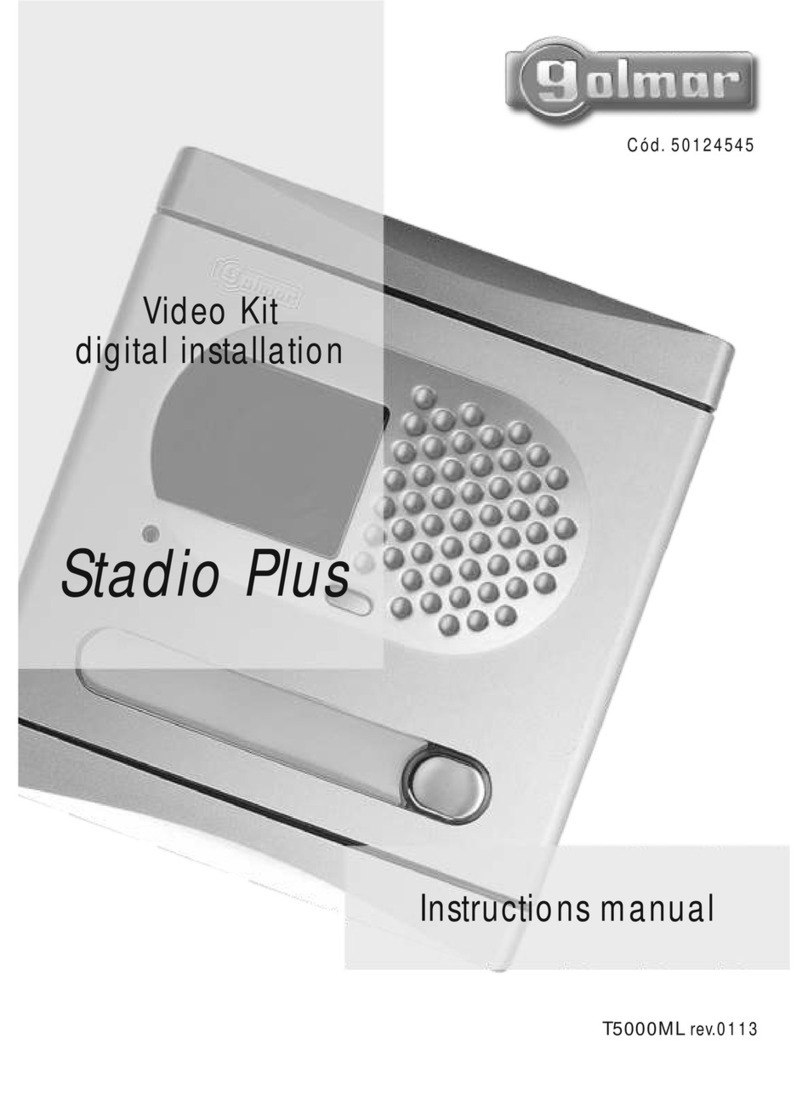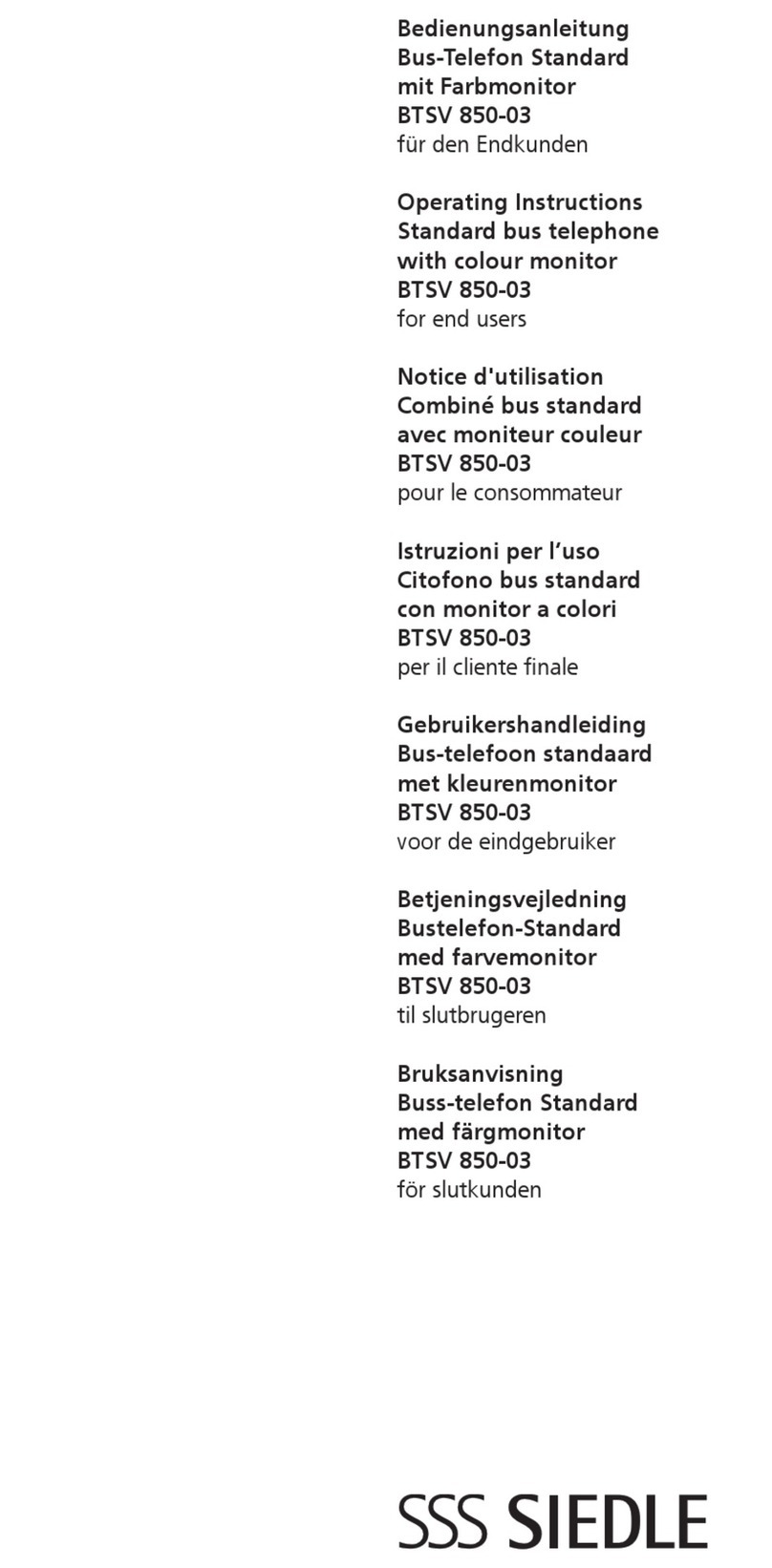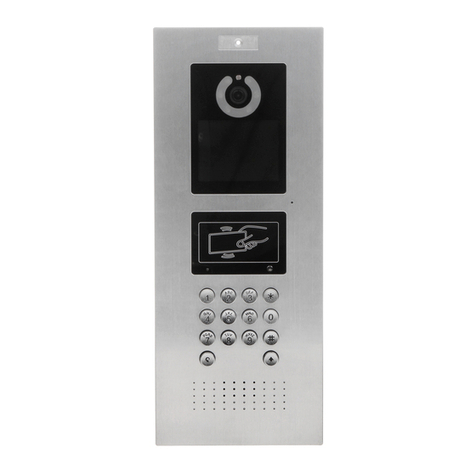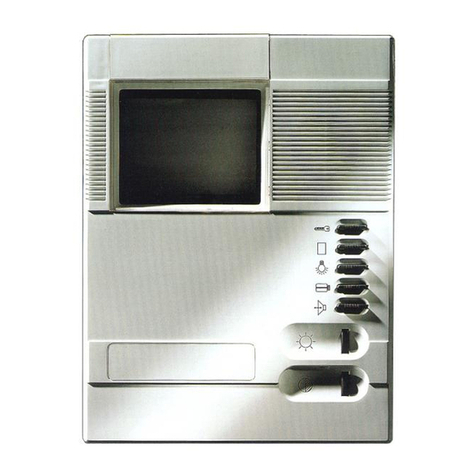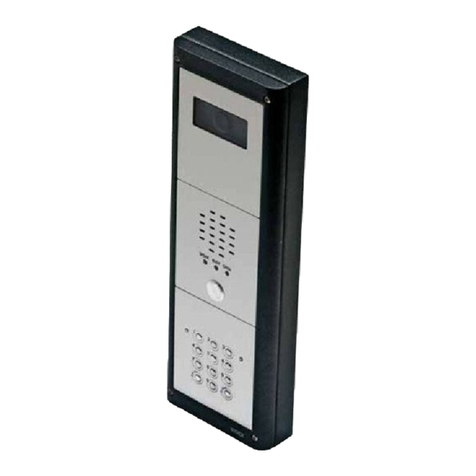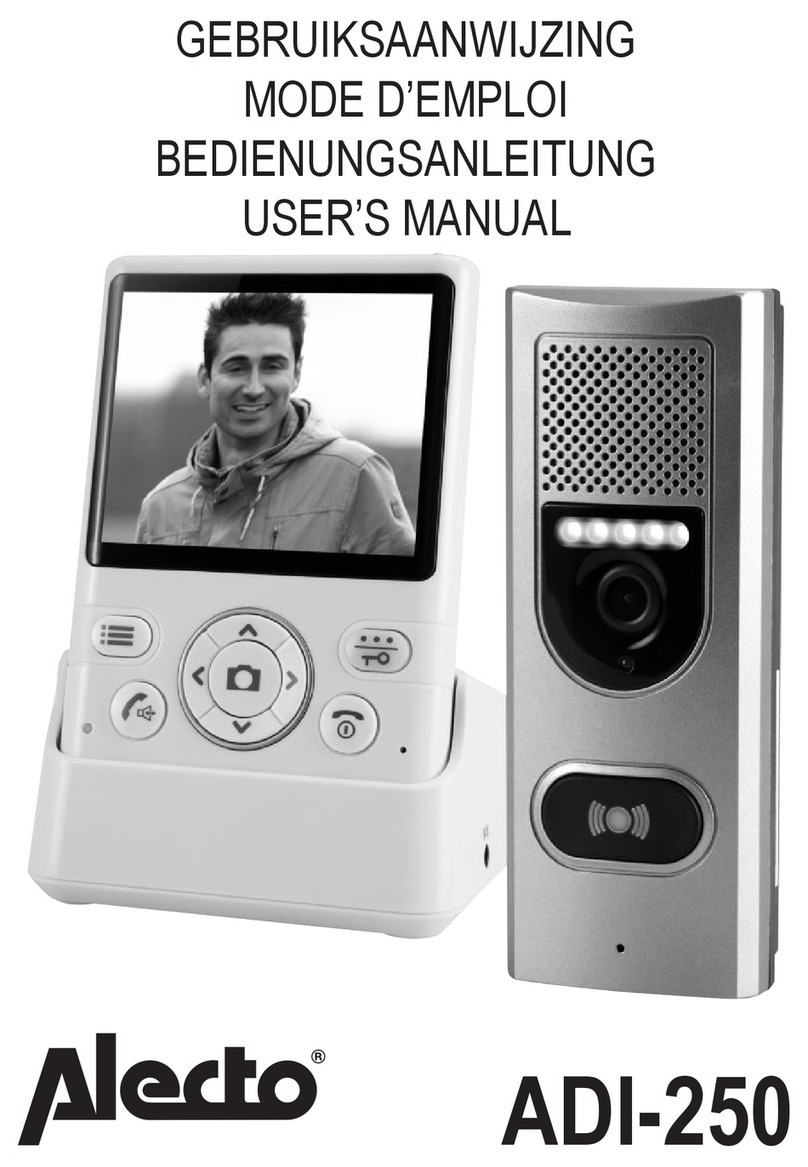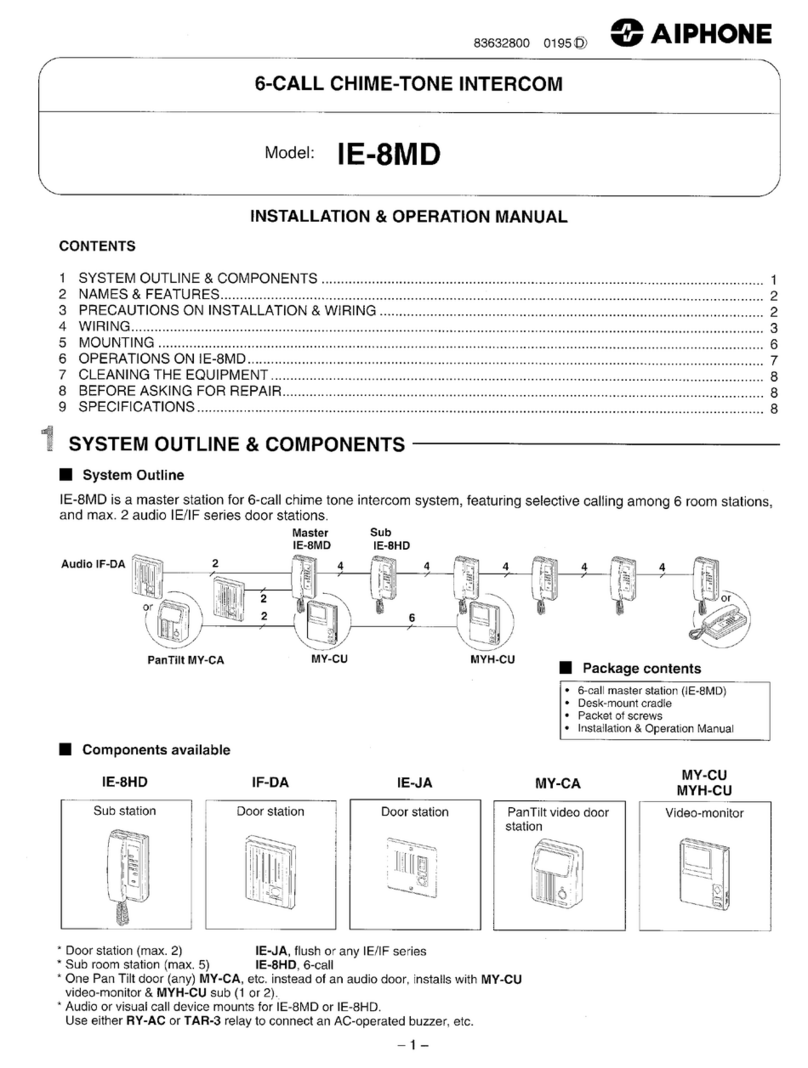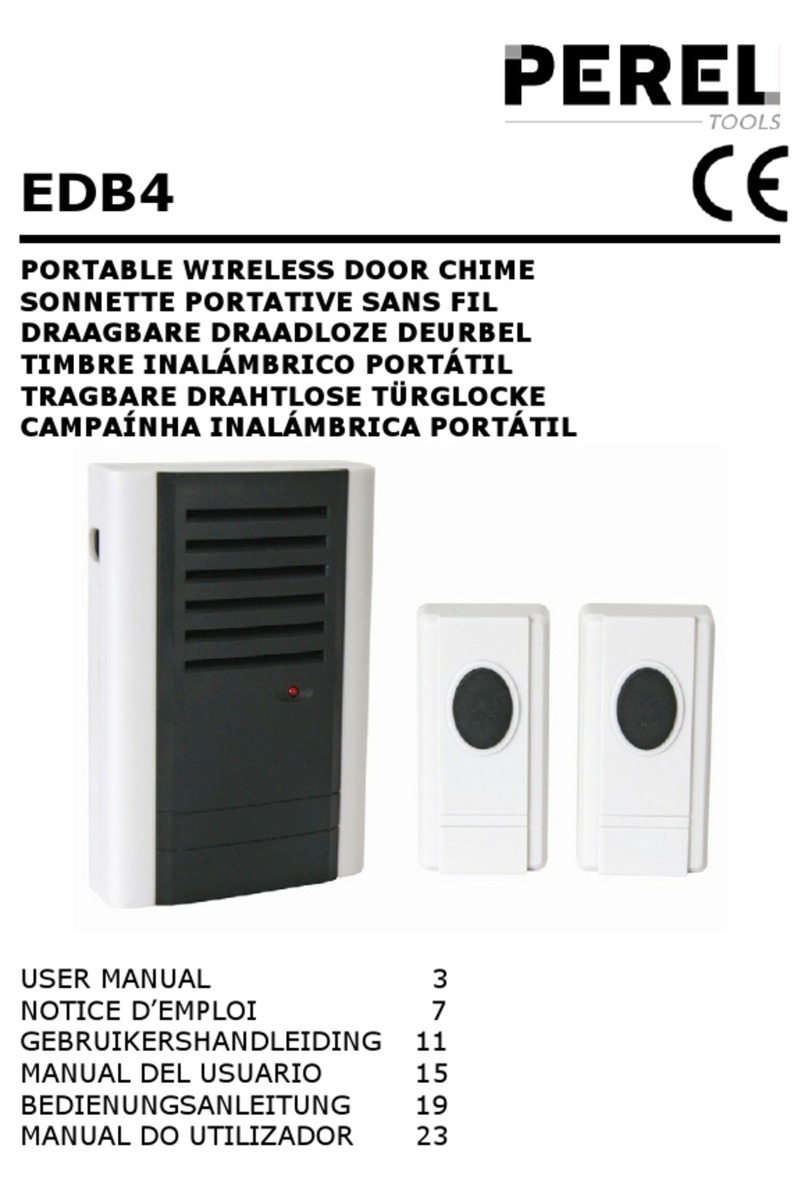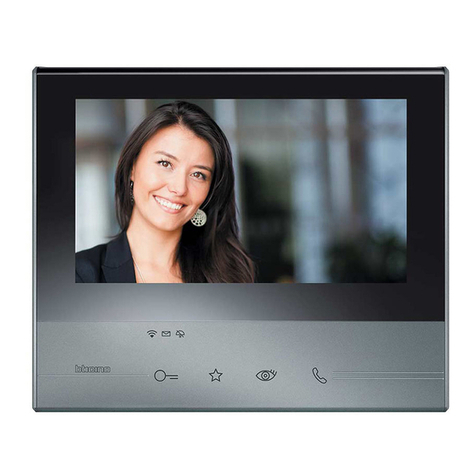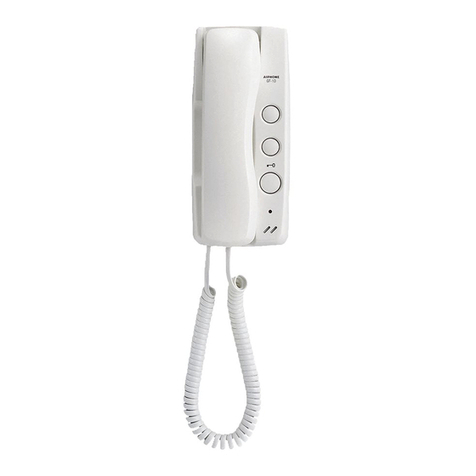
6
Configurazione dei parametri
Eseguire la seguente procedura con le targhe alimentate e dopo aver as-
sociatoilcodiceIDtarga.Questaproceduraèvalidapertutteletarghe,
sia Master che Slave.
Durantelaprogrammazionelatargaènellostatodioccupatoenonpuòes-
sere usata per il funzionamento normale dell’impianto. Nell’unità elettronica
complessivamente sono presenti 8 tasti e 6 LED verdi.
Per la programmazione vengono utilizzati i 6 tasti in basso (tasti serigrafati)
e i 4 LED verdi in basso quest’ultimi fungono da indicatore per la variazione
dei parametri di base. Per comodità i 4 LED verdi li denominiamo DL3,
DL4, DL5, DL6 (vedi figura 5) . Durante la fase di programmazione 6 tasti
assumeranno il significato:
PRECEDENTE = torna alla sequenza precedente
SUCCESSIVO = prosegue alla sequenza successiva
OK = per passare dal menù di sequenza in modifica parametro
START/SI = funzione dipendente dal tipo di parametro
STOP/NO = funzione dipendente dal tipo di parametro
FINE = serve per uscire da modifica parametro o per uscire dalla pro-
grammazione (dipende se all’interno di modifica parametro o se nella fase
“sequenza”
Procedura di configurazione dei parametri dell’unita’ elettronica at-
traverso la tastiera (diagramma delle fasi a pagina 8 e 9):
- Premere e rilasciare il tasto RST (reset). Nel caso di Unità elettronica
configurata come MASTER, attendere che i LED rossi terminino di lam-
peggiare.
- Premere il tasto PRG mantenendolo premuto, premere anche il tasto in
alto a destra e mantenere premuti i due tasti.
- Dopo 2 s, l’ unità elettronica emetterà un tono acuto.
- Inserirelapassword,premendoinsequenzaitasti6-5-4-3-2-1.
Se la password è corretta i LED di illuminazione si spegneranno, altri-
menti l’unità elettronica emetterà un tono basso che indica l’uscita dalla
fase di programmazione.
- Utilizzare i 6 tasti serigrafati, per modificare il valore dei parametri.
ILEDdiilluminazioneindicanolafunzionecorrente,itastiPREC.e
SUCC. selezionano il parametro, il tasto OK entra nella fase di modi-
fica del parametro,iltastoFINEescedallafasedimodificadelpara-
metro.
L’uscita dalla fase di modifica, avviene anche per timeout (30 s) eviden-
ziatodall’emissionediuntonobasso.Iltempoditimeoutvieneprolungato
di 30 s ad ogni pressione di un tasto.
Per uscire dalle fasi di programmazione premere in ogni momento il tasto
FINE.
Parameter configuration
Perform the following procedure with the panels powered and after assi-
gningtheentrancepanelIDcode.Thisprocedureappliestoallpanels,
Master and Slave.
During programming, the entrance panel is in engaged status and cannot
be used for normal system operation. There are 8 buttons and 6 green
LEDs in total on the electronic unit.
The 6 (screen printed) buttons at the bottom are used for programming,
along with the 4 green LEDs at the bottom, which function as indicators
for the variation of standard parameters. For convenience, we call the 4
green LEDs DL3, DL4, DL5, DL6 (see figure 5). During programming the 6
buttons assume the functions:
PREVIOUS = return to the previous sequence
NEXT = move to the next sequence
OK = to move from the sequence menu to parameter modification
START/SI = function depends on the parameter type
STOP/NO = function depends on the parameter type
END = used to exit parameter modification or to exit programming (de-
pendswhetheryouareinparametermodificationorthe“sequence”phase).
Electronic unit parameter configuration procedure using the keybo-
ard (diagram of the steps on pages 10 and 11):
-PressandreleasetheRST(reset)button.Iftheelectronicunitisconfi-
gured as MASTER, wait for the red LEDs to stop flashing.
- Press and hold the PRG button and the top right-hand button simultane-
ously.
- After 2 s, the electronic unit will emit a sharp tone.
- Enter the Password by pressing the buttons 6-5-4-3-2-1 in sequence.
Ifthepasswordiscorrect,theLEDswillswitchoff,otherwisetheelectro-
nic unit will emit a low tone to indicate its exit from programming mode.
- Use the 6 screen printed buttons to adjust the parameter values. The
LEDsindicatethecurrentfunction,thePREV.andNEXTbuttonsselect
the parameter, the OK button enters parameter modification mode, the
END button exits parameter modification mode.
Modification mode is also exited due to a timeout (30 s), indicated by the
emission of a low tone. The timeout period is extended by 30 s every time
a button is pressed.
For rapid exit from the programming phases, press the END button at any
time.
4) L’unità elettronica comunica con il posto interno in programmazione, ed
invia una chiamata.
5) Alla chiamata è possibile rispondere o lasciare che termini il ciclo di
chiamata.Aquestopuntol’identicativoèattribuito.
6)Procederedalpunto3inpoi,perl’assegnazionedell’identicativoauto-
matico degli altri dispositivi (posti interni).
ProceduradiassegnazioneautomaticaidenticativoIDsecondario
7) Procedere come indicato nei punti 1 e 2.
8) Entro 5 minuti circa deve essere iniziata la procedura di programmazio-
neIDsecondariodelpostointerno(perlaproceduradiprogrammazione
del posto interno, fare riferimento alle istruzioni di prodotto dello stesso).
9)L’unitàelettronicacomunicaconilpostointernoinprogrammazione,ed
invia una chiamata.
10) Alla chiamata è possibile rispondere o lasciare che termini il ciclo di
chiamata.Aquestopuntol’identicativoèattribuito.
11)Procederedalpunto8inpoi,perl’assegnazionedell’identicativo
secondario degli altri dispositivi (posti interni).
Nota: il timeout è di circa 5 minuti rinnovabili ad ogni termine operazione.
Nota: la programmazione si blocca se nell’impianto è presente un posto
internoconl’identicativoIDgiàassociatochesitrovaall’internodella
nestradiattribuzione.Seadesempionell’unitàelettronicavienepremuto
iltastoriferitoall’identicativotastoID=5enell’impiantosonopresenti
deipostiinterniacuiègiàstatoattribuitounnumerodiIDinferiorea5
la procedura automatica non avrà problemi . Nel caso in cui sia presente
nell’impiantounpostointernoacuiprecedentementeèstatoattribuitol’ID
=9,laprogrammazioneattribuirà5,6,7,8epoisibloccherànonriuscen-
doadattribuireil9inquantogiàpresente.Perproseguireconl’attribuzio-
ne automatica si dovrà procedere con una nuova attribuzione inserendo
questavoltaalpunto13dellaprocedura,l’identicativoID=10.
Nota:IlnumeromassimodiIDsecondariperogniIDprimariorimane3.
Nota:NelcasocheunidenticativoIDsecondariosiagiàutilizzato(ad
esempioilprimosecondariodiID=1corrispondea51e51siagiàstato
attribuito, gli verrà assegnato il primo identicativo secondario disponibile.
4) The electronic unit communicates with the indoor unit being programmed,
and sends a call.
5) The call can either be answered, or left unanswered until the call cycle
terminates.AtthispointtheIDnumberhasbeenallocated.
6)Repeattheprocedurefromstep3onwards,tocompletetheautomaticID
number allocation for other devices (indoor units).
AutomaticallocationprocedureforsecondaryIDnumber
7) Proceed as indicated in steps 1 and 2.
8)Withinabout5minutes,thesystemshouldbegintheprocedurefor
programmingthesecondaryIDnumberoftheindoorunit(theprocedurefor
programming the indoor unit is explained in the instructions supplied with the
product).
9)Theelectronicunitcommunicateswiththeindoorunitbeingprogrammed,
and sends a call.
10) The call can either be answered, or left unanswered until the call cycle
terminates.AtthispointtheIDnumberhasbeenallocated.
11) Repeat the procedure from step 8 onwards, to complete the secondary
IDnumberallocationforotherdevices(indoorunits).
Note: the timeout setting is approximately 5 minutes, renewable at the end of
each operation.
Note: the programming will lock up if there is an indoor unit in the system
alreadyhavinganassociatedIDnumberlocatedinternallyoftheallocation
window.Forexample,ifID=5isselectedbywayoftheelectronicunitand
thereareindoorunitsthathavealreadybeenallocatedanIDnumberlower
than 5, there will be no problem running the automatic procedure. Should
there be an indoor unit in the system that has previously been allocated
thenumberID=9,theprogrammingfunctionwillallocate5,6,7,8,and
thenlockup,duetothefactthat9alreadyexistsandthereforecannotbe
allocated. To continue with automatic allocation, the user must correct the
sequence manually, in this instance at step 13 of the procedure, by entering
thenumberID=10.
Note:ThemaximumnumberofsecondaryIDsforeachmainIDisalways3.
Note:IntheeventthatasecondaryIDnumberisalreadyinuse(forexample
therstsecondarynumberofID=1happenstobe51and51hasalready
beenallocated,theunitwillbeallocatedtherstsecondaryIDavailable.
